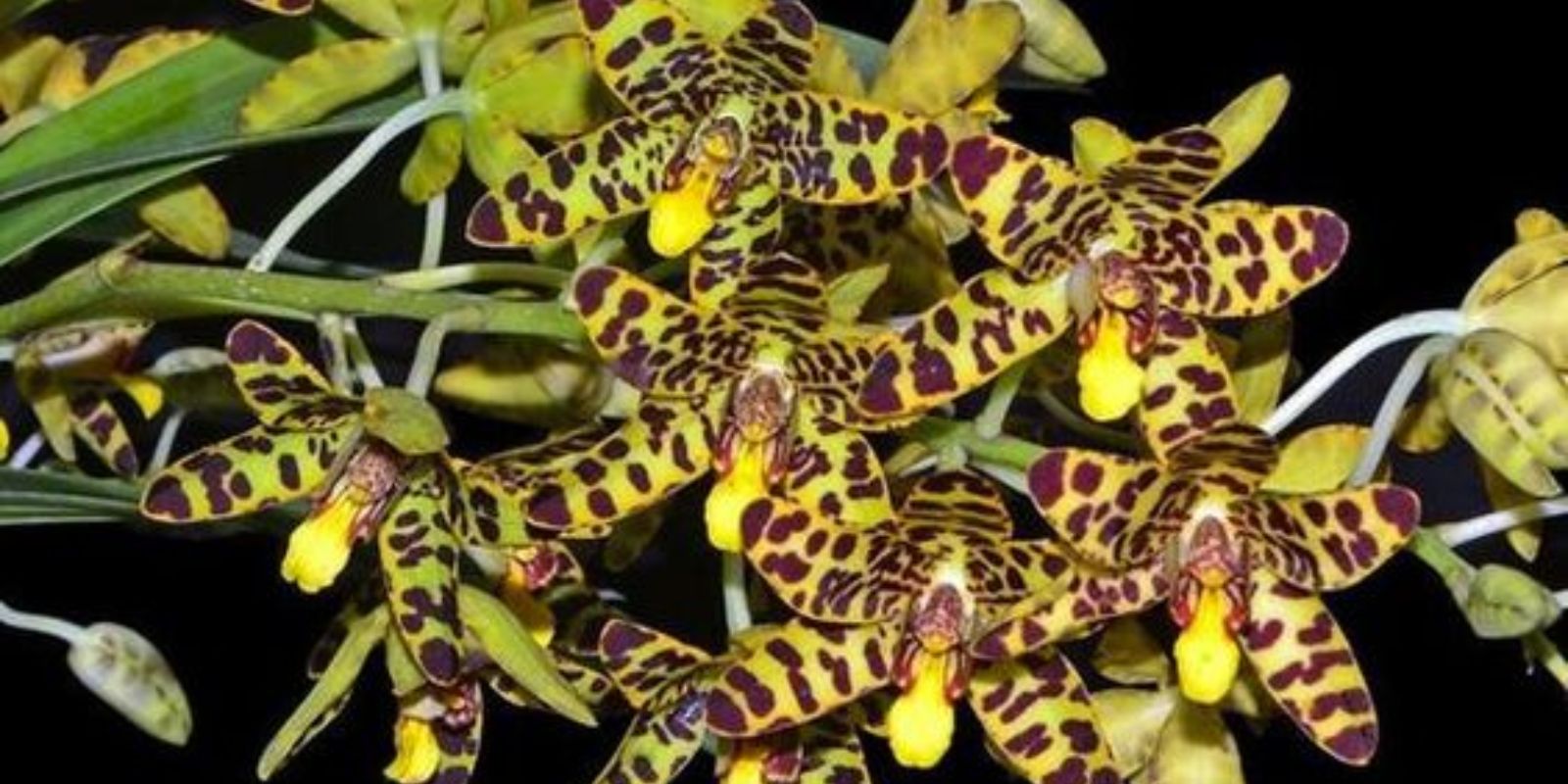The Leopard Orchid, scientifically known as Ansellia africana, is a captivating and exotic species native to the African continent. Its vibrant yellow flowers, adorned with striking brown spots, make it a standout addition to any orchid collection. Growing this unique orchid at home can be a rewarding experience, provided you understand its specific needs and care requirements. In this comprehensive guide, we will explore the steps to successfully cultivate the Leopard Orchid and enjoy its spectacular blooms.
Introduction
Orchids are celebrated for their diverse and exquisite flowers, and the Leopard Orchid is no exception. Named for its distinctive spotted appearance, Ansellia africana can bring a touch of wild African beauty to your home. This orchid species thrives in specific conditions that mimic its natural habitat, and with the right care, you can enjoy its stunning flowers year after year.
Step 1: Choosing the Right Location
The first step in growing a Leopard Orchid is selecting an appropriate location. These orchids thrive in bright, indirect sunlight. Direct sunlight can scorch the leaves, so it’s important to provide filtered light. A spot near an east or west-facing window with a sheer curtain to diffuse the light is ideal. If you don’t have access to natural light, you can use artificial grow lights to provide the necessary illumination.
Tip: Rotate the plant regularly to ensure even light exposure and prevent uneven growth.
Step 2: Potting Mix
The Leopard Orchid requires a well-draining potting mix to thrive. Traditional potting soil is not suitable for orchids because it retains too much moisture, which can lead to root rot. Instead, use a specialized orchid mix that includes materials such as bark, perlite, and charcoal. These components allow for proper aeration and drainage, mimicking the orchid’s natural epiphytic growing conditions.
Tip: Ensure the pot has drainage holes to prevent water from accumulating at the bottom.
Step 3: Watering
Proper watering is crucial for the health of your Leopard Orchid. Water thoroughly when the potting mix feels dry to the touch, typically once a week. However, the frequency of watering can vary based on environmental conditions such as temperature and humidity. It’s important not to let the orchid sit in water, as this can cause root rot. Instead, allow excess water to drain away completely.
Tip: Use lukewarm water to avoid shocking the roots and water in the morning to allow the foliage to dry by evening.
Step 4: Humidity
Leopard Orchids thrive in high humidity environments, ideally between 50-70%. If you live in a dry climate, you can increase humidity around the plant by using a humidity tray or a room humidifier. Placing the orchid on a tray filled with pebbles and water can also help maintain the desired humidity levels. Just make sure the pot is not sitting directly in the water.
Tip: Grouping your orchid with other plants can create a microclimate with higher humidity.
Step 5: Fertilizing
Regular feeding is essential for the growth and flowering of your Leopard Orchid. Use a balanced orchid fertilizer with an N-P-K ratio of 20-20-20 or a similar formulation. Fertilize every 2-4 weeks during the growing season (spring and summer) and reduce feeding during the dormant period (fall and winter). Dilute the fertilizer to half the recommended strength to avoid over-fertilizing, which can harm the plant.
Tip: Rinse the potting mix with clear water monthly to prevent salt buildup from the fertilizer.
Step 6: Temperature
Ansellia africana prefers warm temperatures, ideally between 65-85°F (18-29°C). While they can tolerate slightly lower temperatures, prolonged exposure to cold can stress the plant and inhibit flowering. Maintain a stable temperature range to ensure the orchid’s health and vigor.
Tip: Avoid placing the orchid near drafts or sudden temperature changes, such as open windows or heating vents.
Step 7: Air Circulation
Good air circulation is vital for preventing fungal and bacterial infections. Stagnant air can create a breeding ground for pathogens that can harm your orchid. Ensure there is adequate airflow around the plant by using a small fan if necessary. Just make sure the airflow is gentle and not directly hitting the plant.
Tip: Regularly clean the leaves with a damp cloth to remove dust and improve photosynthesis.
Step 8: Repotting
Leopard Orchids need to be repotted every 2-3 years or when the potting mix begins to break down. Repotting provides fresh nutrients and prevents the roots from becoming overcrowded. The best time to repot is in the spring, just before the growing season begins. Carefully remove the orchid from its current pot, trim any dead or damaged roots, and place it in a new pot with fresh orchid mix.
Tip: Soak the new potting mix in water for a few hours before repotting to ensure it retains moisture.
Step 9: Flowering and Aftercare
With proper care, your Leopard Orchid will produce stunning flowers that can last for several weeks. After the flowers fade, it’s essential to continue providing consistent care to encourage future blooming cycles. Remove spent flowers and stems to redirect the plant’s energy towards new growth.
Tip: Monitor the plant for signs of stress or disease and address any issues promptly to maintain its health.
Conclusion
Growing the Leopard Orchid (Ansellia africana) at home is a rewarding endeavor that allows you to enjoy the exotic beauty of this African native. By following these steps and providing the appropriate care, you can cultivate a healthy, thriving orchid that produces spectacular blooms. Start your orchid-growing journey today and bring a touch of wild elegance to your home with the Leopard Orchid!

